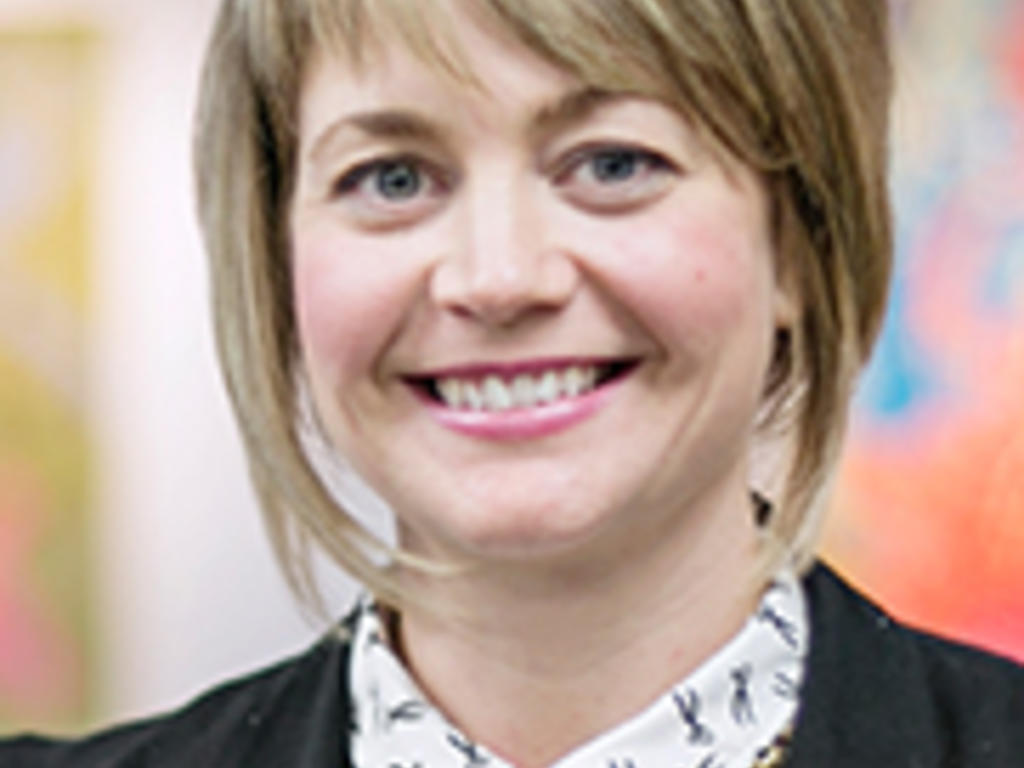By Katie Cannon ′15
Erin Harmon, associate professor and chair of the Department of Art & Art History, is known for her highly decorative and intricate works on paper and wood panel. But now, her art is taking on a new dimension: a collaborative project with Memphis Ballet that will involve the design of two 16- to 18-foot moveable set pieces for the ballet’s third installment of their original dance series, “The River Project.” “I’ve never done anything like this before,” says Harmon.
Primarily a painter, Harmon’s recent collage work, exhibited at the Memphis Brooks Museum of Art, attracted the attention of Ballet Memphis’ artistic director, Dorothy Gunther Pugh. Now, Harmon is in the throes of transforming her 2-D pieces into huge, interactive works of art that will become an integral part of the ballet’s choreography.
The “River Project” series is made up of pieces based on “the culture, the landscape, the politics, and the history of the Mississippi,” says Harmon. The piece that will feature Harmon’s work represents bird migration along the Mississippi flyway, a popular destination for birds heading south for the winter. Harmon plans to integrate the bird motif throughout the set. “There are all these elements that are influenced by bird plumage or bird anatomy,” says Harmon. However, in keeping with her signature style, “It’s not at all technical; it’s very abstracted.”
One of Harmon’s favorite parts about the project is that, while she is collaborating with choreographer Steven McMahon to design pieces that align with the theme of the performance, she still has the ability to make it like her own art work. Explains Harmon, “If they said, ‘Erin, we want you to design something and we want it to look like x, y, and z,’ whereas my work looks like a, b, and c, that would be a very different experience. I don’t know if I would want to do that project. But this feels like a really natural extension of my studio, a move with integrity.”
The brightly colored and whimsically shaped islands she plans on making are based directly on her previous works, which embrace a particular brand of strangeness and uneasy beauty. Though her works focus on depictions of nature, they embody a Wonderland-like sense of the surreal, pointing out darker truths in their wacky-pretty portraiture. “There’s a bit of anxiety in the work—it’s not always a totally serene, meditative space,” she says. “It’s a stuntedness or something. I think it is about that sense of isolation. There’s this sense of a hothouse, of being removed from reality.”
The Ballet Memphis project is ideal for Harmon because it allows her to evolve, while staying true to her aesthetic roots. Says Harmon, “Something that’s cool about the ballet project is that in my past works I had figures, but now the work is very intentionally desolate. So working with the ballet is really exciting, because it means I’m going to see bodies in these spaces again.”
Like her work, Harmon’s artistic philosophy diverges from the typical creative rhetoric—of sudden flashes of brilliance, of god-given gifts and serendipitous muses. “Being an artist isn’t about glamour or inspiration,” she says. “There are all these misconceptions that you have to be super creative, you have to be super talented. It’s really about work, how much work you’re putting in. You can’t wait for ‘the great idea.’ Art is really hard work, and it’s a rigorous conversation that develops over a long period of time.”
That’s the sort of work ethic that Harmon tries to instill in her students, dispelling notions that there’s anything “effortless” about art. Often, it requires more tenacity than brilliance. For Harmon, the “satisfaction is the process of the work, not necessarily the product,” she says. Often, the process is as much of an art as the piece itself. “The fun is trying to solve the problems that come along. Like, how do I make something that’s 18 feet tall? How do I fill this space? To really be an artist, it’s not about making a painting that’s necessarily pretty, but setting the work into a deeper conversation, which can only happen like building a brick house, one block on top of the next."

